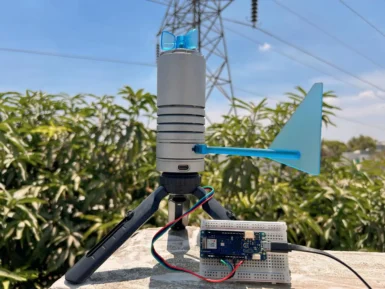
Arduino MKR CAN Shield
Need to connect a device to a CAN (Controller Area Network) for communication within an automobile and with other CAN devices? The Arduino MKR CAN shield will provide automotive CAN connectivity.
Overview
With this shield you can easily connect to a CAN (Controller Area Network) Bus. Discover new possibilities of interaction between your Arduino MKR Board and the CAN ecosystem.
The MKR CAN shield can simplify the connection of the MKR boards with industrial systems and especially with automotive applications. This shield opens a new set of possible applications like smart vehicles, autonomous cars and drones. A CAN connection also provides the possibility to connect a MKR board directly with several types of industrial grade sensors, motors and displays.
Notice: On some boards, the bottom silk is mirrored. Please refer to the top silk for guidance. If you need further assistance, contact our support team
Tech specs
| Protocol | CAN Bus |
| Interface | SPI |
| Circuit Operating Voltage | 3.3 V |
| Controller | Microchip MCP2515 (datasheet) |
| Transceiver | NXP TJA1049 (datasheet) |
| Buck converter | Texas Instruments TPS54232 (datasheet) |
| Vin (screw connector) | 7 V - 24 V |
| Vin (header) | 5 V |
| Compatibilty | MKR size |
| Switchable onboard termination resistor | |
Conformities
Resources for Safety and Products
Manufacturer Information
The production information includes the address and related details of the product manufacturer.
Arduino S.r.l.
Via Andrea Appiani, 25
Monza, MB, IT, 20900
https://www.arduino.cc/
Responsible Person in the EU
An EU-based economic operator who ensures the product's compliance with the required regulations.
Arduino S.r.l.
Via Andrea Appiani, 25
Monza, MB, IT, 20900
Phone: +39 0113157477
Email: support@arduino.cc
Documentation
OSH: Schematics
The Arduino MKR CAN Shield is open-source hardware! You can build your own board using the following files:
EAGLE FILES IN .ZIP SCHEMATICS IN .PDFLearn more
Get Inspired
Using the Garmin LIDARLite v3HP, Arduino MKR WIFI 1010 and Pushsafer to detect an intruder and send a push notification to a smartphone.

Being able to monitor the weather in real-time is great for education, research, or simply to analyze how the local climate changes over time. This project by Hackster.io user Pradeep explores how he was able to design a simple station outdoors that could communicate with a cloud-based platform for aggregating the sensed data. The board Pradeep selected is the Arduino MKR WiFi 1010 owing to its low-power SAM D21 microcontroller and Wi-Fi/BLE connectivity for easy, wireless communication. After configured, he connected a DFRobot Lark Weather Station, which contains sensors for measuring wind speed/direction, temperature, humidity, and barometric pressure — all in a compact device. Every second, the MKR WiFi 1010’s sketch polls the sensors for new data over I2C before printing it to USB. The cloud integration aspect was achieved by leveraging Qubitro’s platform to collect and store the data for later visualization and analysis. To set it up, Pradeep created a new device connection and copied the resulting MQTT endpoint/token into his sketch. Then once new data became ready, it got serialized into a JSON payload and sent to the topic where a variety of widgets could then show dials and charts of each weather-related metric. To read more about this DIY weather station, you can visit Pradeep’s project write-up here.








